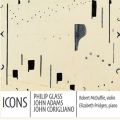
AllMusic Rating
User Rating (0)
Your Rating
Release Date
October 12, 2010Duration
40:03Genre
Styles
Recording Date
April 17, 2010
Recording Location
Southbank Centre's Royal Festival Hall, London








